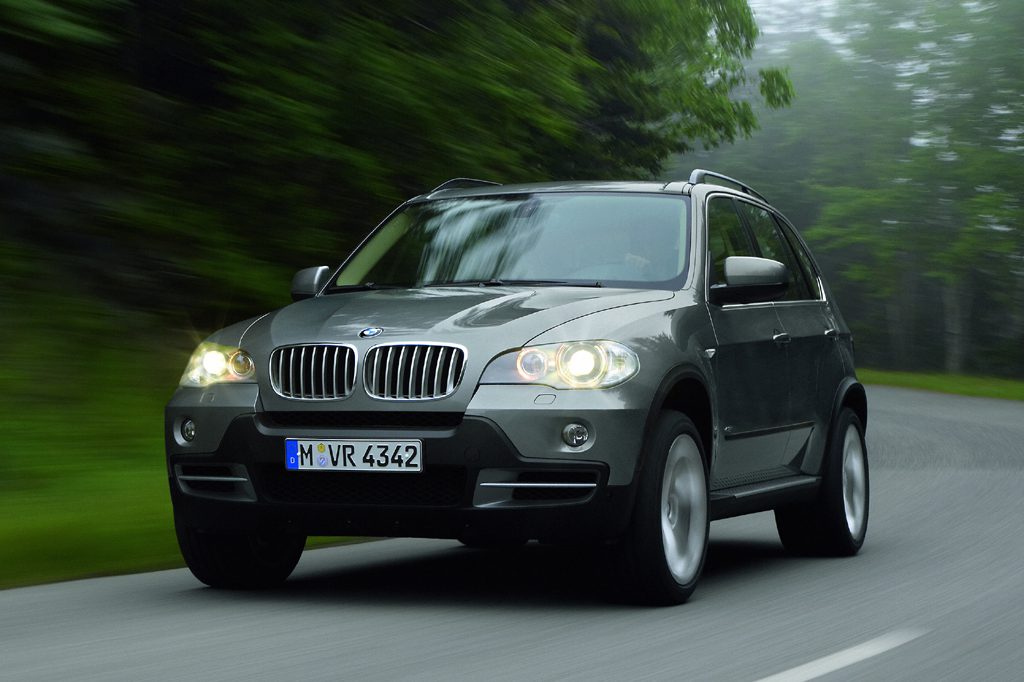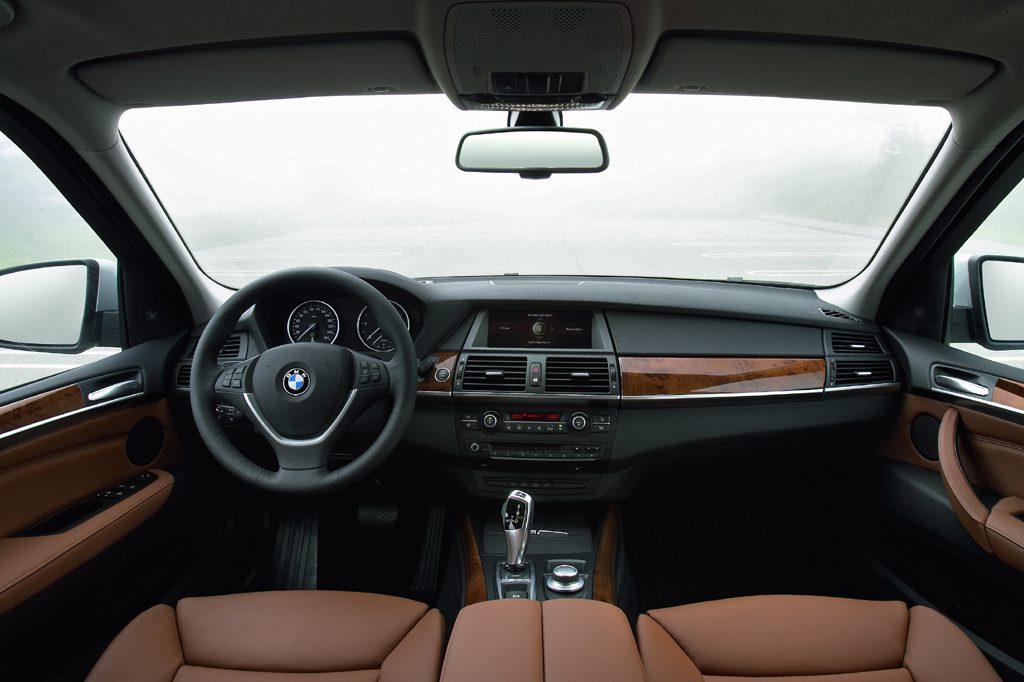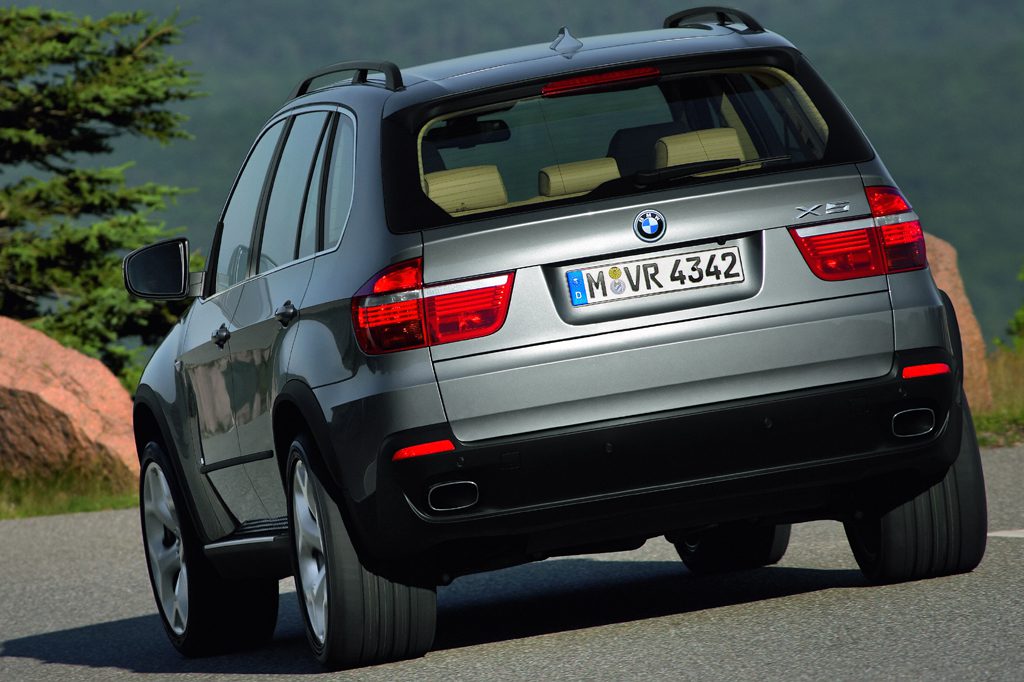| Premium midsize SUV; Built in Germany |
|
|
| Good condition price range: $13,700 – $61,500* |

2008 BMW X5

2008 BMW X5

2008 BMW X5

2008 BMW X5
| Pros: |
|
| Cons: |
|
BMW’s X5 excels for its fine balance of ride quality and sporty handling. Credit BMW for simplifying key functions in its iDrive control system, inducing less frustration than systems in some other models. However, the navigation system is confounding, the available third-row seat is a mere token gesture, and X5s have been pricey when new, particularly in V8 form. That price premium has been partially offset by strong resale values-which is not necessarily good news for used-BMW buyers.
Overview
BMW redesigned the larger of its two sport-utility vehicles for 2007, making it bigger and adding the possibility of seven-passenger seating. Compared to the 2006 models, the 2007 X5 was 4.5 inches longer in wheelbase, 7.4 inches longer overall, 2.4 inches wider, and 2 inches taller. This premium midsize all-wheel-drive SUV was offered in two models. The 3.0si had a 260-horsepower inline six-cylinder engine, which replaced the 225-hp 3.0i. The 4.8i held a 350-horsepower, 4.8-liter V8, replacing the 315-hp 4.4i. Both came only with a six-speed automatic transmission.
Standard seating was for five, but an optional third-row seat expanded capacity to seven. Each X5 had all-wheel drive without low-range gearing, traction/antiskid control with rollover sensors, and hill descent control. Front side airbags were standard, as were curtain side airbags that covered the first two seating rows and included rollover deployment. All X5s had steering-linked xenon headlights and BMW’s iDrive that used a single knob to control entertainment, communication, navigation, and climate functions.
An available Sport Package included a driver-adjustable suspension and BMW’s Active Roll Stabilization, which countered body lean. BMW’s Active Steering, designed to quicken low-speed steering response, was optional. Other options included a navigation system, head-up instrument display, DVD entertainment, a rearview camera with front/rear obstacle detection, and BMW Assist concierge service with wireless cell phone linkage. With the X5, BMW competed against such premium SUVs as the Acura MDX, Cadillac SRX, Lexus RX, and Volvo XC90.
Yearly Updates
| 2008 X5 Only minor changes in equipment and options were applied to BMW’s larger SUV for 2008. A panoramic sunroof was standard, and a power tailgate became optional. |
| 2009 X5 The 2009 BMW X5 lineup gained a new diesel model, as well as new trim-level designations. The xDrive30i replaced the 3.0si and carried a 260-hp 3.0-liter 6-cylinder engine. The xDrive48i replaced the 4.8i and had a 350-hp 4.8-liter V8. Added midyear was xDrive35d, which had a 265-hp 3.0-liter turbodiesel that was emissions legal in all 50 states. |
| 2010 X5 The 2010 BMW X5 lineup gained a high-performance M model with a 555-horsepower 4.4-liter twin-turbo V8. |
| 2011 X5 The 2011 BMW X5 lineup saw several changes, including slightly freshened styling and a couple of new powertrains. The xDrive35i had a 300-horsepower turbocharged 3.0-liter inline 6-cylinder engine. It replaced a 260-horsepower inline 3.0-liter 6-cylinder engine. The xDrive50i had a 400-horsepower turbocharged 4.4-liter V8, which replaced a 350-horsepower 4.8-liter V8. Both these X5 models got an 8-speed automatic transmission. |
| 2012 X5 There were no changes of note to the 2012 BMW X5. |
| 2013 X5 There were no major changes to the 2013 BMW X5. |
